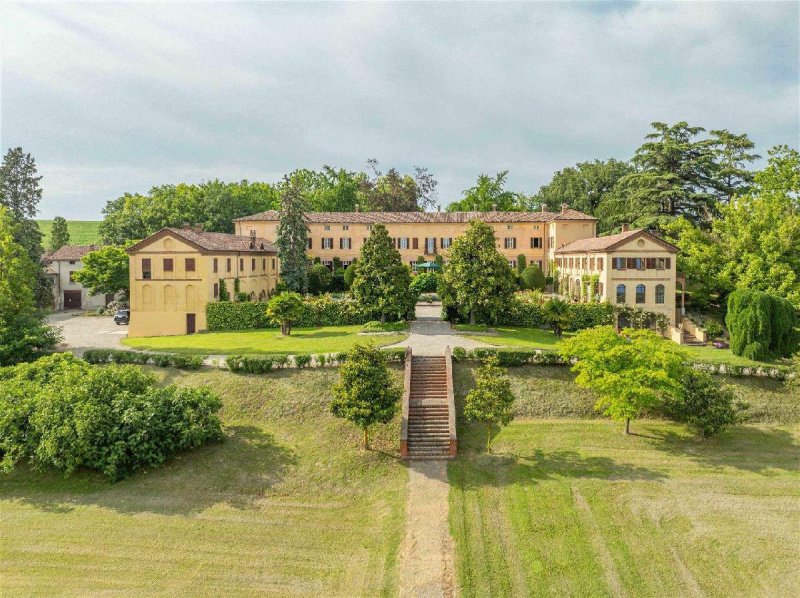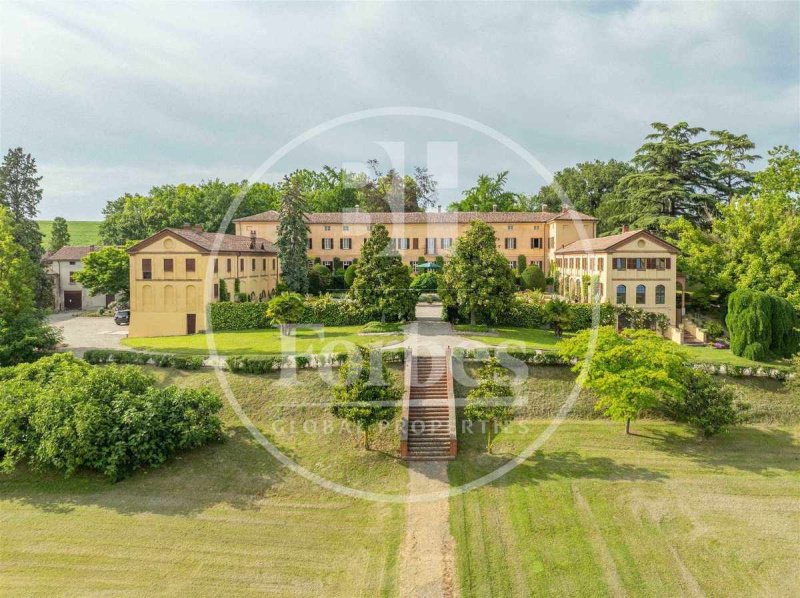The La Voglina estate, situated atop the hill between Valenza and Alessandria, is a residence with a fascinating history and unmatched elegance. The area has been declared a heritage site of "particularly important interest" by the Ministry of Cultural Heritage. The hill, which extends over more than 25 hectares facing south, is part of a land and agricultural property that for two centuries made La Voglina the largest land estate in the area.
Valenza, the town of the estate, is the world capital of high-end and luxury jewelry. Today, with an annual turnover of nearly 3 billion euros and less than 19,000 inhabitants, the city hosts the world's leading luxury jewelry brands, from Bulgari, which has moved its entire global jewelry production to Valenza, to Cartier and Tiffany. Alongside a substantial group of some of the world's finest jewelry artisans, it is indeed known as the city of gold and one of Italy's most important excellence districts.
The estate also stands out for its harmonious symbiosis with the surrounding nature. The hills, perfectly south-facing, produced excellent wines like Barbaresco, Barbera, and Aleatico until about 30 years ago. Additionally, the property is known for the spontaneous production of summer black truffles and the famous winter white truffles, which grow in favorable environmental conditions. This rare and exquisite tuber finds a perfect habitat thanks to the symbiosis between the soil and trees.
With an internal property area of 3,300 square meters, arranged over various levels, the estate alternates between suite rooms with bathrooms, private lounges, outdoor areas, and a private chapel. There is also a guest house and an entire village-style area to be restored. The property is surrounded by a wonderful centuries-old park embellished with a beautiful Italian garden and woods. The architectural imprint of the great Piedmontese architect Filippo Juvarra contributes to the harmony of the estate, which holds its podium on one of the last gentle hills of Monferrato before the floodplain leading to the gates of Lomellina in Lombardy. The interiors feature sumptuous halls with frescoed vaults and stuccos.
Historically, the property was an ancient convent from the 1700s, with the papal consecration of its chapel in 1807 by Cardinal Pius VII, who desired to make it his residence. Over the years, the estate hosted officers of the Austrian troops stationed in Alessandria at the beginning of the 19th century, later replaced by Napoleon's troops, who briefly stayed at the villa during the Battle of Marengo, which took place nearby and forever changed the history of Italy and Europe. The estate has been owned by the family of the current owners since 1820.
A well-known English art critic, visiting the property a few years ago, described La Voglina as "the most beautiful house in the world" and challenged anyone to dispute this statement, emphasizing that the innate elegance of this residence is irreplicable and resides in the perfect balance of proportions, emotions, and harmony.
自动翻译所用的语言
La tenuta La Voglina, situata sulla sommità della collina fra Valenza e Alessandria, è una dimora con una storia affascinante e una eleganza ineguagliabile. La zona è stata dichiarata patrimonio di “interesse particolarmente importante” da parte del Ministero dei beni culturali. La collina, sulla quale si erge, si estende per più di 25 ettari esposta a sud, facendo parte di una proprietà terriera e agricola che per due secoli ha fatto della Voglina la più grande proprietà terriera della zona.
Valenza, città della Tenuta, è la capitale mondiale del gioiello di alta gamma e di lusso. Oggi, con un turnover annuo di quasi 3 miliardi di euro e meno di 19.000 abitanti, la città ospita le più grandi griffe mondiali del gioiello di lusso, da Bulgari, che ha trasferito a Valenza l'intera produzione mondiale della sua gioielleria, a Cartier e Tiffany. Insieme a un nutrito gruppo di artigiani del gioiello tra i più bravi al mondo, è infatti conosciuta come la città dell'oro e uno dei distretti di eccellenza più importanti d'Italia.
La tenuta si distingue anche per la sua armoniosa simbiosi con la natura circostante. Le colline, esposte perfettamente a sud, producevano fino a 30 anni fa un ottimo vino, come il Barbaresco, il Barbera e l'Aleatico. Inoltre, la proprietà è nota per la produzione spontanea di tartufi neri estivi e dei famosi tartufi bianchi invernali, che crescono in condizioni ambientali favorevoli. Questo tubero, raro e prelibato, trova un habitat perfetto grazie alla simbiosi tra terreno e alberi.
Con una superficie immobiliare di 3300 mq interni, disposti su vari livelli, alterna camere suite con bagno a salotti privati, zone dehor e una cappella privata, inoltre vi è la dependance e una intera zona stile borgo da recuperare. La proprietà è circondata da un meraviglioso parco secolare impreziosito da un bellissimo giardino all'italiana e da boschi. L'impronta architettonica della scuola del grande architetto piemontese Filippo Juvarra contribuisce all'armonia della Tenuta che detiene il suo podio su una delle ultime dolci colline del Monferrato prima della piana fluviale che conduce alle porte della Lomellina lombarda. Gli interni presentano suntuosi saloni con volte affrescate e stucchi.
Storicamente, La Proprietà era un antico convento del 1700, con la consacrazione papale della sua cappella nel 1807 da parte del Cardinale Pio VII, che desiderava farne la sua residenza. Nel corso degli anni, la tenuta ha ospitato ufficiali delle truppe austriache di stanza ad Alessandria agli inizi dell'800, poi sostituiti dalle truppe di Napoleone, che soggiornò brevemente nella villa durate la battaglia di Marengo, svoltasi nelle vicinanze, che cambiò per sempre la storia dell'Italia e dell'Europa. La tenuta è di proprietà della famiglia degli attuali proprietari dal 1820.
Un noto critico d'arte inglese, in visita alla proprietà alcuni anni fa, ha descritto La Voglina come "la più bella casa del mondo" e ha sfidato chiunque a negare questa affermazione, sottolineando che l'eleganza innata di questa dimora è irriproducibile e risiede nell'equilibrio perfetto tra proporzioni, emozioni e armonia. Classe Energetica: G EPI: 123 kwh/m2 anno


